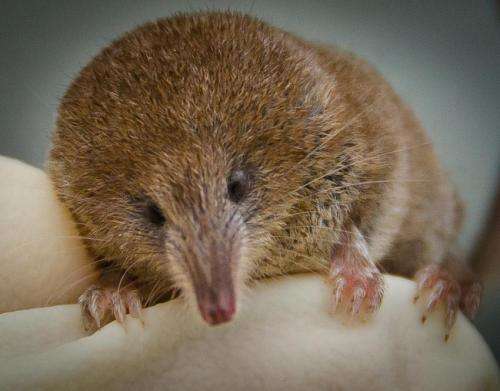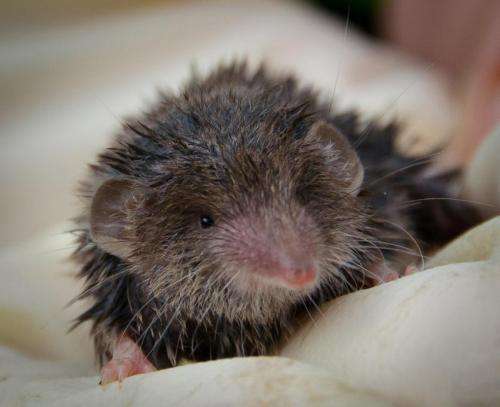Pygmy shrew population in Ireland threatened by invasion of greater white-toothed shrew

An invading species of shrew first discovered in Ireland in the pellets of barn owls and kestrels in 2007 is spreading across the landscape at a rate of more than five kilometres a year, according to findings published in the scientific journal PLOS ONE.
University College Dublin scientists who conducted the study say that the invading species, the greater white-toothed shrew (Crocidura russula) is capable of colonizing the entire island by 2050. This, they say, is leading to the disappearance of the pygmy shrew (Sorex minutus) from Ireland, one of the world's smallest mammals, which has been on the island for thousands of years.
"The invading population of the greater white-toothed shrew currently covers an area of 7,600 km2 and is found in Counties Tipperary, Limerick, Cork, Waterford, Kilkenny, Offaly and Laois," says Dr Allan McDevitt, UCD School of Biology and Environmental Science, University College Dublin, the lead author of the paper.
"Small satellite populations have also been found in Cork city and more recently in Mullingar, but according to our data they have not yet crossed the Shannon," he adds.
"Species can live together after invasions occur, but in this case there may not be sufficient landscape complexity in Ireland to allow niche partitioning between these two species of shrew."

"The displacement of the pygmy shrew will continue in Ireland as the greater white-toothed shrew carries on spreading rapidly, with the invader only being temporarily hindered by rivers and other barriers," adds Dr Jon Yearsley, a co-author on the PLOS ONE paper, who is also based at University College Dublin.
"Our findings suggest that at the present expansion rate, the greater white-toothed shrew is capable of colonizing the whole island of Ireland by 2050," he says.
"The sheer speed of the invasion of the greater white-toothed shrew and its competitive superiority in eating large insect prey could have severe negative impacts on the population of Irish pygmy shrews, and even lead to its local extinction."
"The greater white-toothed shrew needs to be recognized as an invasive species that has the potential to have a large negative impact on the Irish ecosystem", says Dr Allan McDevitt.
"With these findings, we appeal to the appropriate authorities in both the Republic of Ireland and Northern Ireland to address the issue of invasive species causing severe ecological impacts across the island."
According to Professor Ian Montgomery of Queen's University Belfast, who recently published in the journal Biological Invasions on the impact of invasive small mammals on Ireland's resident small mammal populations, ensuring bigger hedgerows and more deciduous woodland may enable the protection of species against invaders.
The pygmy shrew is one of the world's smallest mammals. Adults weigh between 3 and 6g. They have iron deposits at the tip of their teeth which give them a red colour. They have brownish hair on upper surface and whitish grey on the belly. Their tails are thick, hairy and long relative to its body size.
The greater white-toothed shrew can weigh between 8 and 14g, or about three times the size of the pygmy shrew. As their name suggests, they have distinctive white teeth. They are bicoloured, with greyish brown hair on upper surface and yellowish grey lower belly. They have prominent ears and long, white hairs on their tail.
Journal information: PLoS ONE , Biological Invasions
Provided by University College Dublin















